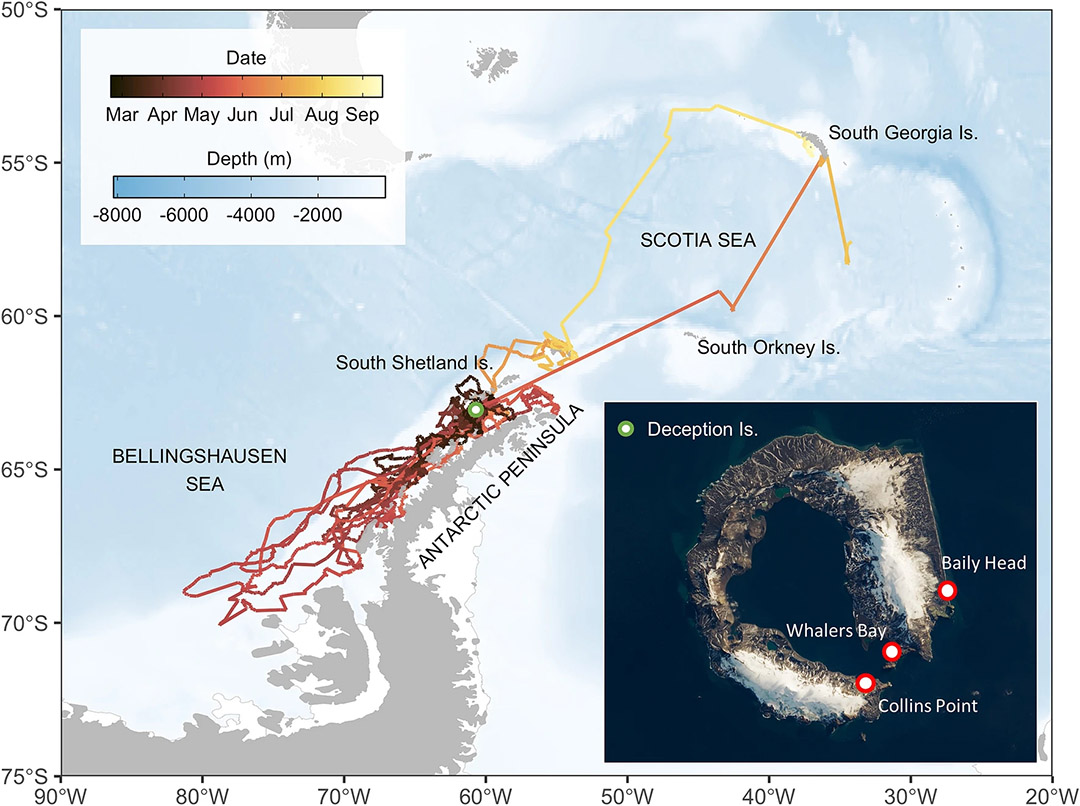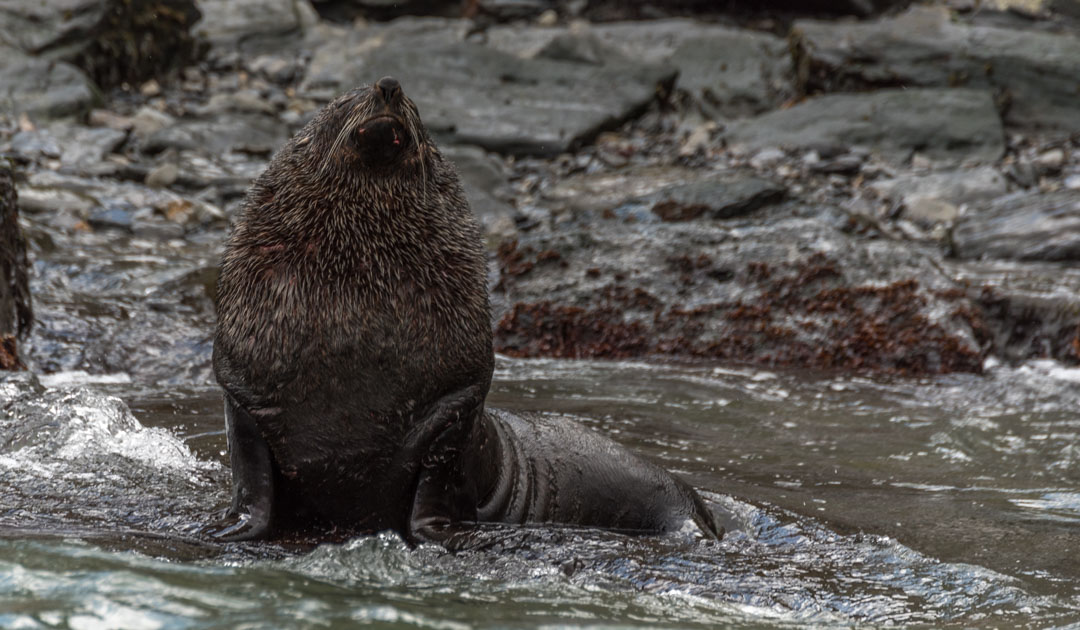
Antarctic fur seals(Arctocephalus gazella) living in the Atlantic sector of the Southern Ocean and west of the Antarctic Peninsula feed mainly on Antarctic krill(Euphausia superba). Therefore, it is important to include the amount of krill they eat in management decisions for sustainable krill fisheries. So far, however, only the populations of female fur seals, which spend the winter in other regions than their male conspecifics, are considered. Now, thanks to a new study by scientists from the University of Barcelona, there is also data on the distribution of young male fur seals during the winter months, which of course have an impact on the krill population.
The interactions between Antarctic krill, their predators and krill fisheries are not yet fully understood and catch rates may be overestimated given the neglect of the influence of juvenile and subadult male fur seals on krill, whereas those animals have the highest food-demand. So the authors of the new study, published in the journal Nature Scientific Reports, examined the population structure of one- to four-year-old male juveniles and five- to six-year-old subadult males that used haul-out sites on Deception Island, South Shetland Islands, during the winter. In addition, 15 animals tagged with satellite transmitters provided data that the researchers used to develop a distribution model for the species and identify environmental factors that influence fur seal distribution.

The results show that juvenile and subadult males dominate the total male population. The Southern Shetland Islands and the Bransfield Strait west of the Antarctic Peninsula form their main distribution area, with animals ranging from the Bransfield Strait to the Bellingshausen Sea in late summer and early winter, but shifting their habitat north from Adelaide Island to South Georgia in mid and late winter. According to the model results, the environmental factors determining distribution were bathymetry, sea surface temperature, salinity, chlorophyll concentration and distance from the ice edge, the latter being the most important factor in combination with krill biomass. According to the authors, the distribution of male fur seals was consistent with the distribution of Antarctic krill known from previous studies. Overall, the researchers found that juvenile and subadult male fur seals spend the entire winter in waters near the Antarctic continent.
One reason that male and female Antarctic fur seals overwinter in different regions could possibly be due to the very pronounced sexual dimorphism – the striking difference in body size between females and males. The much larger males also have a much thicker and therefore better insulating layer of fat, which allows them to forage further south in winter. Female thermoregulation, on the other hand, is not as good due to their lower body mass, which may be why they opt for wintering areas further north. However, the fat layer of young males is similar to that of females.

The main reason for the different distribution areas is probably the vertical distribution of krill in winter, when its biomass is greatly reduced. It concentrates over the winter months in shelf areas at depths of over 100 metres. Female fur seals, however, rarely dive that deep, usually only around 50 meters, and therefore would not reach their food. Males are able to dive over 100 meters deep and prey on krill that stays at that depth during the day. This would explain why females stay close to their breeding grounds in winter.
According to the authors, the year-round presence of male fur seals in the region west of the peninsula suggests that they are responsible for most of the krill consumption of the entire Antarctic fur seal population in the Atlantic sector of the Southern Ocean. Because juveniles and subadult males predominate in the population on South Georgia and Deception Island, they are of particular interest.

In the second half of the 20th century, the largest population of Antarctic fur seals lived on South Georgia, probably thanks to huge swarms of krill. As the temporal and spatial extent of sea ice decreases due to climate change, krill also retreat further south, with the greatest density in summer in Bransfield Strait and Maguerite Bay. An explanation why the young male fur seals prefer this region.
The disappearance of krill in the Scotia Sea has resulted in a significant decline in the reproductive success of fur seals. Good krill availability in Bransfield Strait has no effect on reproductive success here, as there are no breeding colonies nearby.
In conclusion, the authors call for the year-round presence of juvenile, subadult, and adult male Antarctic fur seals in the maritime Antarctic to be incorporated into krill population management in order to make the fishery as sustainable as possible.
Julia Hager, PolarJournal





